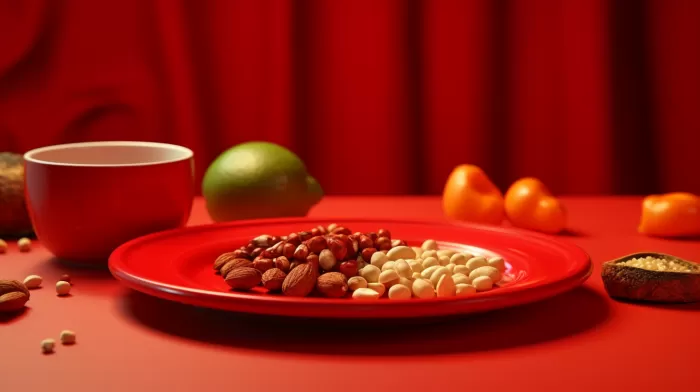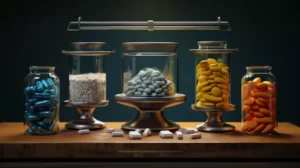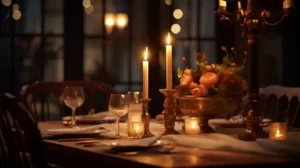You may not have thought about it before, but did you know that your dinner plate might be causing you to pack on extra pounds? Your plate’s size, color, contrast, and even the background it sits on can all play a part in how much you eat. Keep reading to discover the science behind these surprising phenomena, and learn how to use this information to help with weight loss.
Size Matters
Research has repeatedly shown that a larger dinner plate can lead to overeating. The reason? A big plate tricks your brain into thinking you have less food, causing you to eat more without realizing it. To combat this, simply choose a smaller plate during your meals. This will make your portion sizes appear larger and help you avoid overeating.
Color Counts
A study published in the journal Appetite found that plate color has an impact on caloric intake. Participants were given a choice of chocolate, popcorn, and cream served on red, white, and blue plates. Those who ate off of red plates consumed less, regardless of how much they reported enjoying the food. This suggests that the color red may signal to our brains that we should stop eating. For this reason, consider switching out your current dinnerware for a red set to help decrease overeating.
Contrast is Key
The contrast between your food and your plate can also affect the amount you eat. If the color of your food closely matches the color of your plate, like green beans on a green plate or pasta with alfredo sauce on a white plate, you’re likely to eat more. This happens because of a phenomenon called the Delboeuf illusion, which causes you to see the portion size as smaller when there is less contrast between the food and the plate.
Increase the contrast between your meals and their plates by choosing colors like blue or purple, which are less common among food colors. This will help you better gauge portion sizes and avoid overeating.
Background Considerations
Surprisingly, the background that your plate sits on can also impact how much you eat. While it’s important for your food and plate to have a high color contrast, the opposite is true when it comes to the relationship between your plate and table or tablecloth.
Researchers have found that when there is a high contrast between a plate and its background (such as a white plate on a blue tablecloth), people tend to eat more. Reducing the color contrast between dinnerware and its background, like using a tablecloth or placemat that matches your plate, can reduce over-serving by as much as 10%.
With this in mind, try matching your placemat or tablecloth to your dinner plate to help control your portion sizes.
Put the Science to Work
While being aware of these principles can help you make better choices, the illusions still impact serving sizes even when we are conscious of them. To use this knowledge to your advantage, consider revising your dinnerware. Opt for high-contrast colors like red, blue, or purple, and match your tablecloth or placemat accordingly. And, of course, don’t forget that using smaller plates can go a long way in helping you control your portion sizes and overall caloric intake.
By understanding the psychology behind these phenomena and applying it to your mealtimes, you can take steps towards managing your weight and living a healthier life.



